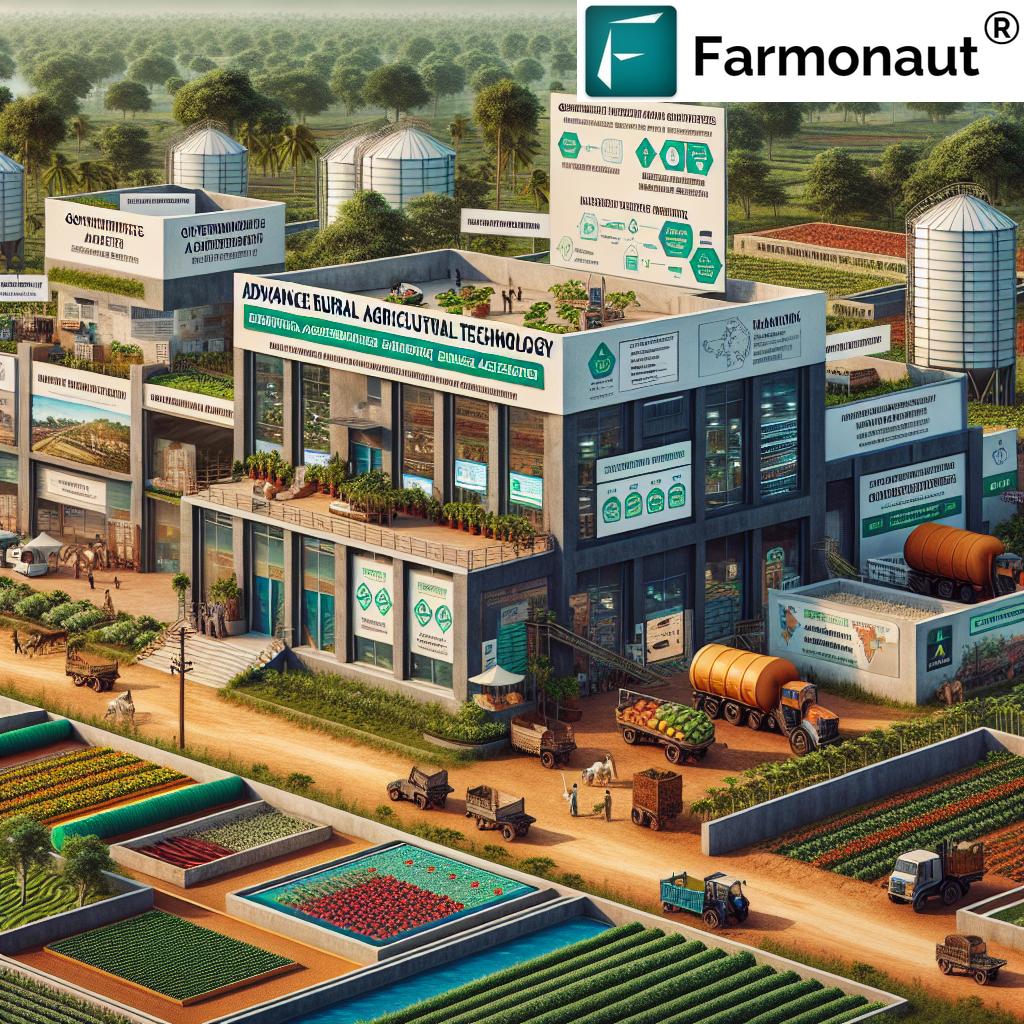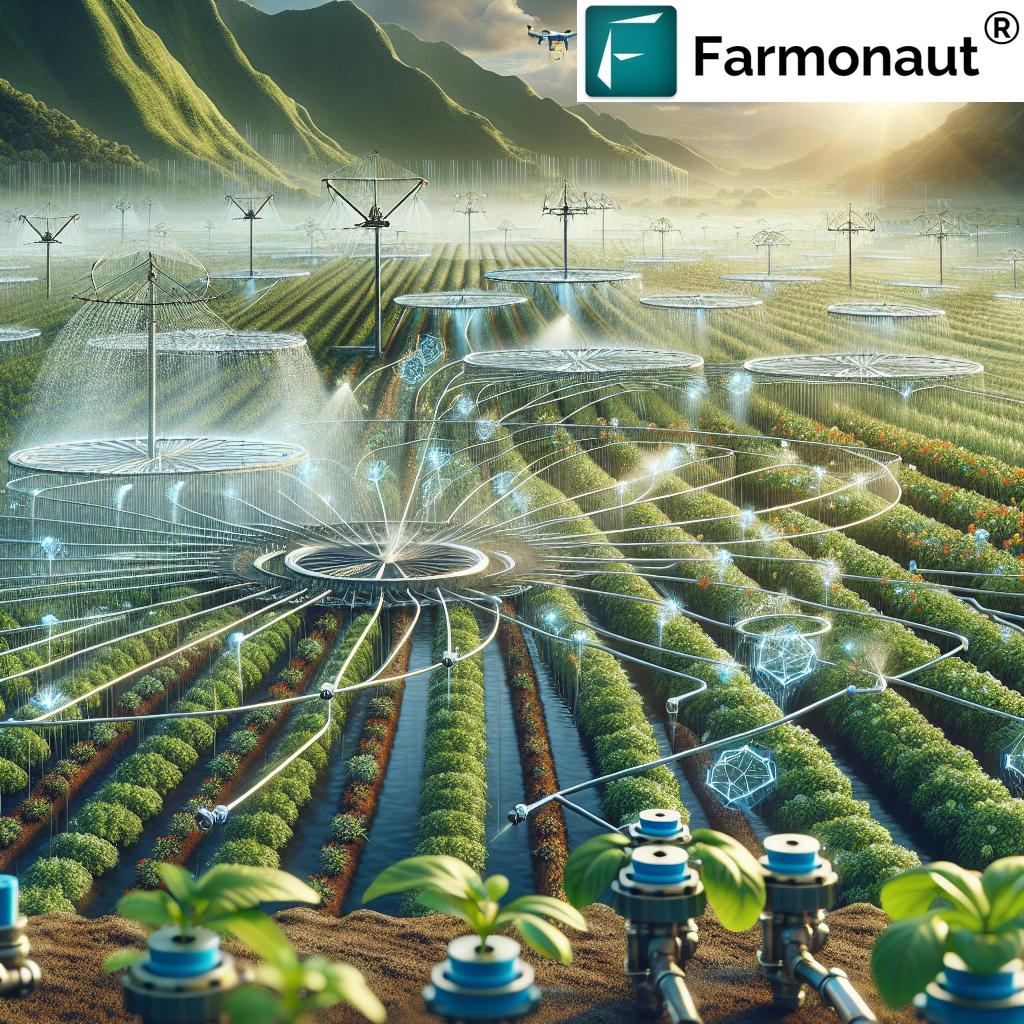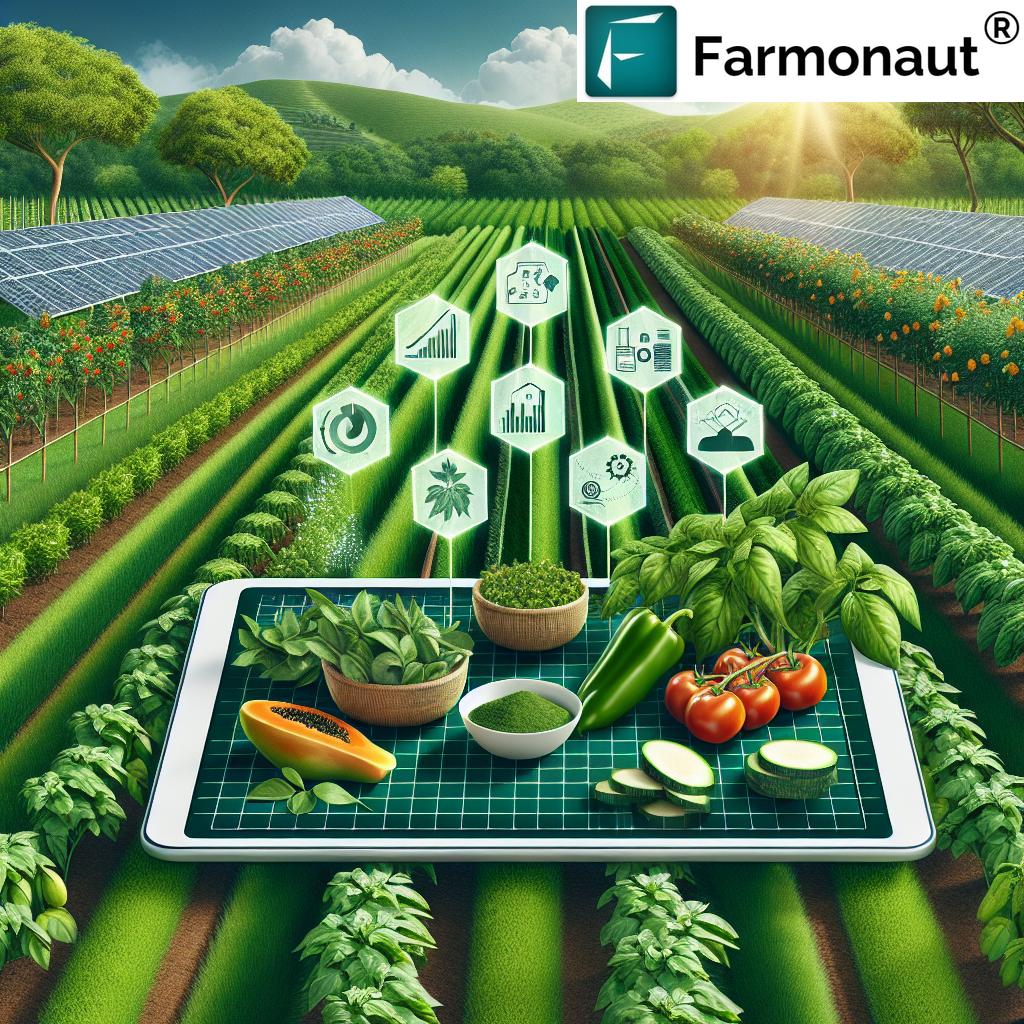Union Budget Agriculture 2023: 10 Key Initiatives
“India’s agriculture budget for 2023 allocated ₹1.25 lakh crore, marking a 5% increase from the previous year.”
Agriculture Budget 2023 India: Pioneering Government Initiatives for Farmers and Agri-Tech
The Union Budget 2023-24 marks a significant chapter in India’s journey towards an innovative and sustainable agricultural sector. Presented by Finance Minister Nirmala Sitharaman, this budget is strategically designed to drive growth, modernization, and sustainability for India’s farmers and agri-businesses. From robust financial support for agriculture sector, the establishment of agri-tech accelerator funds, to modern digital public infrastructure and the encouragement of sustainable farming practices India, government initiatives for farmers in 2023 put strong emphasis on productivity, inclusivity, and technological advancement.
These transformative initiatives not only promise modernization and improved profitability but also reflect the government’s renewed commitment to sustainability, climate resilience, and global competitiveness. In this detailed guide, we dive deep into the top 10 key schemes and initiatives that form the cornerstone of the agriculture budget 2023 India.
Let’s explore the details behind each of these visionary initiatives and how they are shaping the present and future of agriculture in India.
“Over 10 major government initiatives were introduced in 2023 to boost sustainable farming and agri-tech adoption in India.”
Summary Table: Key Agriculture Budget Initiatives (Agriculture Budget 2023 India)
| Initiative Name | Estimated Fund Allocation (INR Crore) | Primary Objective | Expected Impact | Target Beneficiaries |
|---|---|---|---|---|
| Agricultural Credit & Financial Support | 20,00,000 | Boost credit flow to agriculture, especially animal husbandry, dairy, fisheries | Enhanced financial stability, increased investment in agri-value chains | Farmers, agri-based industries |
| Agriculture Accelerator Fund for Agri-Tech Startups | NA (special fund announcement) | Support innovation and entrepreneurship among rural youth | Increased tech adoption, employment, rural innovation | Young entrepreneurs, agri-tech startups |
| Digital Public Infrastructure for Agriculture | NA | Build open, interoperable digital platform for agriculture | Better access to information, markets, services | All farmers, agri-tech ecosystem |
| Decentralized Storage Infrastructure | NA | Assist farmers in storing produce, improving sales timing | Reduced post-harvest losses, better pricing | Farmers |
| PM-PRANAM Scheme | NA | Encourage use of alternative fertilizers, reduce chemical usage | Sustainable farming, less pollution | States, UTs, farmers |
| Natural Farming Initiative and Bio-Input Resource Centres | NA; 10,000 centres planned | Facilitate natural, chemical-free farming | Expansion of organic farming, improved soil health | 1 crore farmers (targeted) |
| Millet Promotion and Centre of Excellence | NA (support for IIMR Hyderabad) | Position India as global hub for millets | Enhanced research, marketing, exports | Farmers, millet processors, exporters |
| Atmanirbhar Clean Plant Programme | 2,200 | Boost availability of disease-free planting material | Higher yields, lower losses for horticulture | Horticulture farmers, nurseries |
| PM Matsya Sampada Yojana Sub-Scheme | 6,000 | Expand fisheries and aquaculture value chains | Increased production, exports, income | Fisher folk, enterprises |
| PACS Computerization | 2,516 | Digitalize Primary Agricultural Credit Societies | Transparency, improved access to credit | Farmer-members, small cooperatives |
| GOBARdhan ‘Waste to Wealth’ Initiative | 10,000 | Promote circular economy using biogas | Reduced waste, clean energy, rural income | Rural communities, biogas enterprises |
1. Massive Agricultural Credit and Financial Support: Unlocking Growth and Modernization
A pivotal highlight of the agriculture budget 2023 India is the allocation of ₹20 lakh crore in agricultural credit for the fiscal year. This unprecedented funding targets core subsectors such as animal husbandry, dairy, and fisheries, aiming to accelerate modernization and growth. The central goal is to ensure financial support for agriculture sector players — especially farmers — by making institutional credit more accessible and affordable.
- Significant allocation is set aside—empowering farmers and allied industries for expansion, technology adoption, and risk mitigation.
- Direct financial support will help address issues like input costs, working capital, and value chain investments.
- Strengthening animal husbandry, dairy, and fisheries will drive diversification and increase rural incomes, aligning with the government initiatives for farmers.
For agri-businesses and cooperatives, innovative agricultural credit schemes will further reinforce market linkage, input purchase, and farm modernization.
2. Promotion of Agri-Tech Startups Through Accelerator Fund
India’s agricultural landscape is experiencing a paradigm shift, thanks to the growing ecosystem of agri-tech startups India. The Union Budget 2023-24 reinforced this momentum by announcing the Agriculture Accelerator Fund — a dedicated scheme to nurture startups, entrepreneurs, and innovation in rural areas.
- The accelerator fund aims to provide seed funding, mentorship, and incubation to young entrepreneurs, stimulating problem-solving at the grassroots.
- This government initiative is designed to promote innovation, digitalization, and rural entrepreneurship — helping India harness data, AI, IoT, and remote sensing in day-to-day farming practices.
- It brings inclusive solutions to address issues like smallholder farmer productivity, efficient input use, and market access.
As part of the agriculture budget 2023 India, agri-tech startups India can now play a vital role in empowering farmers, improving yield, reducing costs, and boosting income.
We, at Farmonaut, champion these trends by providing digital tools—like satellite-based crop health monitoring, data analytics, and AI-powered advisories—that can be integrated by startups for scalable impact. Our large scale farm management solutions enable agri-entrepreneurs and businesses to efficiently oversee numerous farm plots via real-time satellite insights and AI, helping transform traditional agriculture into a data-driven, efficient operation.
3. Agricultural Infrastructure Development and Digital Agriculture Platform
Recognizing that infrastructure development is fundamental for sectoral growth, the government launched an ambitious plan for digital public infrastructure for agriculture. This open-source, interoperable platform envisions inclusive, farmer-centric solutions — bolstering agricultural infrastructure development in India.
- Digital agriculture platform: Designed to provide easy access to farm inputs, credit schemes, market intelligence, and real-time advisories.
- It will support agri-tech startups, researchers, and entrepreneurs by leveraging APIs, ensuring their products integrate seamlessly with existing systems.
- Farmers can access key services cross-platform (web, Android, iOS)—for instance, solutions like Farmonaut’s blockchain-based product traceability that provide traceability and transparency from field to market.
- Decentralized agri-storage capacities will be established, assisting farmers in storing produce and securing remunerative prices through timely sales. This directly addresses rural post-harvest losses.
By embracing cloud-based digital agriculture platforms, both farmers and agribusinesses stand to benefit from integrated intelligence, better planning, and improved connectivity to input/output markets.
For development teams and agri-enterprises, our Farmonaut Satellite & Weather API unlocks integration opportunities, while the API Developer Docs provide seamless onboarding for custom agri-apps and research initiatives.
4. Sustainable Farming Practices India: PM-PRANAM and Natural Farming
Environmental sustainability and climate-resilience are at the heart of the Union Budget’s agricultural vision. The PM-PRANAM scheme exemplifies this by incentivizing states and union territories to promote alternative fertilizers, curb the excessive use of chemical fertilizers, and adopt balanced fertilizer application.
- Objective: Reduce dependency on chemical inputs, thereby improving soil health and promoting sustainable farming practices India.
- A national push to facilitate natural and organic farming is underway—targeting one crore farmers in adopting chemical-free farming over the next three years.
- 10,000 Bio-Input Resource Centres will be established, creating a distributed micro-fertilizer and pesticide manufacturing network at the grassroots.
This initiative is poised to transform India into a global leader in sustainable agriculture practices, enhancing both environmental and economic outcomes.
Our carbon footprint tracking tool at Farmonaut, detailed on our Carbon Footprinting Solutions page, is aligned with these objectives—providing agribusinesses and researchers the means to monitor and minimize emissions, improve compliance with environmental regulations, and support circular economy ambitions across the sector.
5. Millet Promotion Schemes and Clean Plant Program Horticulture
The government has placed special emphasis on making India the global hub for millets through robust millet promotion schemes. The Indian Institute of Millet Research (IIMR) Hyderabad is being elevated to a Centre of Excellence, sharing advanced research, technology, and best practices worldwide.
- Puts India at forefront of the global ‘Shree Anna’ (millet) movement, increasing export, nutrition, and climate resilience.
- Strengthens the ecosystem of millet production, value addition, processing, and international market penetration.
Moreover, the Atmanirbhar Clean Plant Programme comes with an allocation of ₹2,200 crore, focusing on clean plant program horticulture — ensuring the widespread availability of disease-free and quality planting material for high-value fruits and crops. This directly impacts yield, disease management, and export standards.
For commercial horticulturists and high-value producers, this not only unlocks new genetic potential but also facilitates higher export readiness.
6. Fisheries and Aquaculture Development
With the PM Matsya Sampada Yojana sub-scheme and a proposed ₹6,000 crore investment, the budget outlines a deep financial commitment to fisheries and aquaculture development. This initiative covers:
- Boosting infrastructure, cold chains, market access, and value addition in the blue economy.
- Improving value chain efficiency—from harvest to consumer—for fish vendors, micro and small enterprises.
Such targeted funding will drive export growth, livelihood opportunities, and technological adoption (like real-time monitoring, logistics, and farm management).
Our fleet management tools empower large-scale cooperative fisheries and agribusinesses to oversee complex operations, from harvest logistics to resource optimization, with satellite-enabled, web-based tracking.
7. Digitalization and Financial Inclusion: PACS Computerization
A transformative digitalization and financial inclusion push is now underway through the computerization of 63,000 Primary Agricultural Credit Societies (PACS), with an investment of ₹2,516 crore. This digital drive will:
- Enhance access to credit, ensuring transparent, hassle-free transactions for farmers.
- Bolster inclusion of small and marginal farmers in formal finance.
- Integrate PACS into the digital agriculture platform, allowing seamless access to schemes, inputs, and insurance.
Digitized credit records and real-time verification, available via solutions like Farmonaut’s crop loan and insurance verification, bring transparency, fraud-reduction, and reliable outcome measurement to agricultural finance.
8. Waste-to-Wealth: GOBARdhan and Biogas Investment
Circular economy initiatives are gaining ground with the expansion of the GOBARdhan (Galvanizing Organic Bio-Agro Resources Dhan) scheme. The establishment of 500 new ‘waste to wealth’ plants, backed by an investment of ₹10,000 crore, promotes:
- Conversion of organic waste into biogas—powering farms, rural enterprises, and microgrids.
- A 5% compressed biogas mandate for organizations marketing natural/biogas, further enhancing India’s bio-economy.
- Income generation from agricultural residues and waste streams, aligning with international sustainability goals.
These measures are set to create new rural jobs, spur technological advancement, and help transition Indian agriculture to a net-zero landscape.
9. Critiques, Observations, and Funding Overview
While the Union Budget 2023-24 lays the groundwork for modernization, some concerns were raised about the overall allocation to the agriculture sector. Notably, the total outlay was trimmed by ₹9,000 crore compared to the previous fiscal year, leading some experts and farmer associations to flag the risk of underfunding essential programs.
- Opposition voices stress that while measures are innovative, robust funding and timely disbursement remains essential for actual implementation.
- Timely and effective utilization of the allocated funds will determine success, especially for rural digitization, agricultural infrastructure development, and sustainable agriculture.
- Multi-stakeholder partnership, transparency, and local capacity-building will be critical in scaling these government initiatives for farmers.
The ability to measure and report on the outcomes—whether crop productivity, resource use efficiency, or market access—will dictate the real-world impact of this budget.
10. How Farmonaut Empowers Agricultural Transformation
With the budget’s focus on innovation, digitalization, and sustainability, our work at Farmonaut directly complements the national agricultural vision. Our mission is to make precision agriculture affordable and accessible via:
- Satellite-based crop health monitoring: Real-time NDVI data, soil moisture analytics, and resource maps allow farmers to optimize irrigation, apply balanced fertilizers, and reduce wastage.
- Jeevn AI Advisory: Personalized, AI-driven farm insights and weather forecasts help raise productivity, improve planning, and maximize profits.
- Blockchain-based traceability solutions: Empowering food, textile, and agri-exports with secure, transparent supply chains—from farm to fork.
- Fleet and resource management: For cooperative societies and commercial farms looking to scale efficiency in logistics, input distribution, and plantation tracking.
- Carbon footprinting: Monitor emissions, implement sustainable practices, improve resource-use efficiency, and stay compliant with green mandates.
By harnessing technological innovation in line with government priorities, we enable individual farmers, agribusinesses, financial institutions, and policymakers to:
- Enhance productivity and reduce costs
- Access timely credit, insurance, and financial support (see our crop loan and insurance satellite-verification for financial institutions)
- Implement sustainable practices and measure output impact
- Streamline logistics and meet traceability standards (explore product traceability and fleet management)
If you are a research institution or corporate managing large agricultural estates, our Agro Admin App offers advanced analytics for multisite plantation management, compliance reporting, and AI-driven advisories.
Learn more about our technology, subscription plans (below), and developer opportunities to join the agri-digital revolution!
Farmonaut Plans & Subscriptions
Choose the best Farmonaut subscription for real-time crop monitoring, resource management, and digital transformation tailored for farmers, cooperatives, agribusinesses, and government agencies.
Frequently Asked Questions (FAQ) – Agriculture Budget 2023 India
Q1: What is the focus of the Agriculture Budget 2023 India?
A: The primary focus is on driving innovation, modernization, and sustainability in the agricultural sector through targeted funding, digital platform development, sustainable farming practices, and inclusion of agri-tech startups.
Q2: How does the government support agri-tech startups this year?
A: The Union Budget 2023-24 introduces an Agriculture Accelerator Fund to provide financial support, mentorship, and market access for agri-tech startups, especially in rural areas, encouraging technological innovation and entrepreneurship.
Q3: What steps are being taken for sustainable farming practices India?
A: Key initiatives include the PM-PRANAM scheme to reduce reliance on chemical fertilizers, rollout of 10,000 Bio-Input Resource Centres for natural farming, and leveraging circular economy via the GOBARdhan scheme.
Q4: Are there any new schemes for agricultural credit and financial support?
A: Yes, the budget earmarks ₹20 lakh crore for agricultural credit schemes, tailored towards farmers, and allied industries, reinforcing financial inclusion and stability in the sector.
Q5: How does Farmonaut add value amid these government initiatives?
A: Farmonaut empowers users with satellite-based monitoring, AI-driven advisory, blockchain traceability, fleet management, and carbon footprint tracking. Our solutions support both government policies and private initiatives targeting productivity, financial access, and sustainability across India.
Conclusion: Shaping India’s Agri-Future with Foresight and Technology
The Union Budget 2023-24 is a forward-looking milestone for Indian agriculture. Through a blend of significant financial allocation, innovative government initiatives for farmers, and inclusive technological advancement, it is setting new benchmarks for productivity, sustainability, and inclusivity in the sector. While challenges remain around funding dispersal and implementation, the roadmap for agriculture budget 2023 India is bold, comprehensive, and globally relevant.
We at Farmonaut are committed to equipping all stakeholders—farmers, agribusinesses, researchers, and policymakers—with the most accessible and advanced tools to harness this new era of agricultural transformation. By leveraging satellite imagery, AI, blockchain, and real-time analytics, we envision an empowered, digitally connected, and sustainable farming community across the nation.
For seamless integration of satellite data, advisory, carbon monitoring, and farm management, explore Farmonaut’s applications and APIs today. Access the web or mobile app and step into the future of Indian agriculture!
Join the agri-technology revolution. The future of Indian agriculture is bright, digital, and sustainable!






















